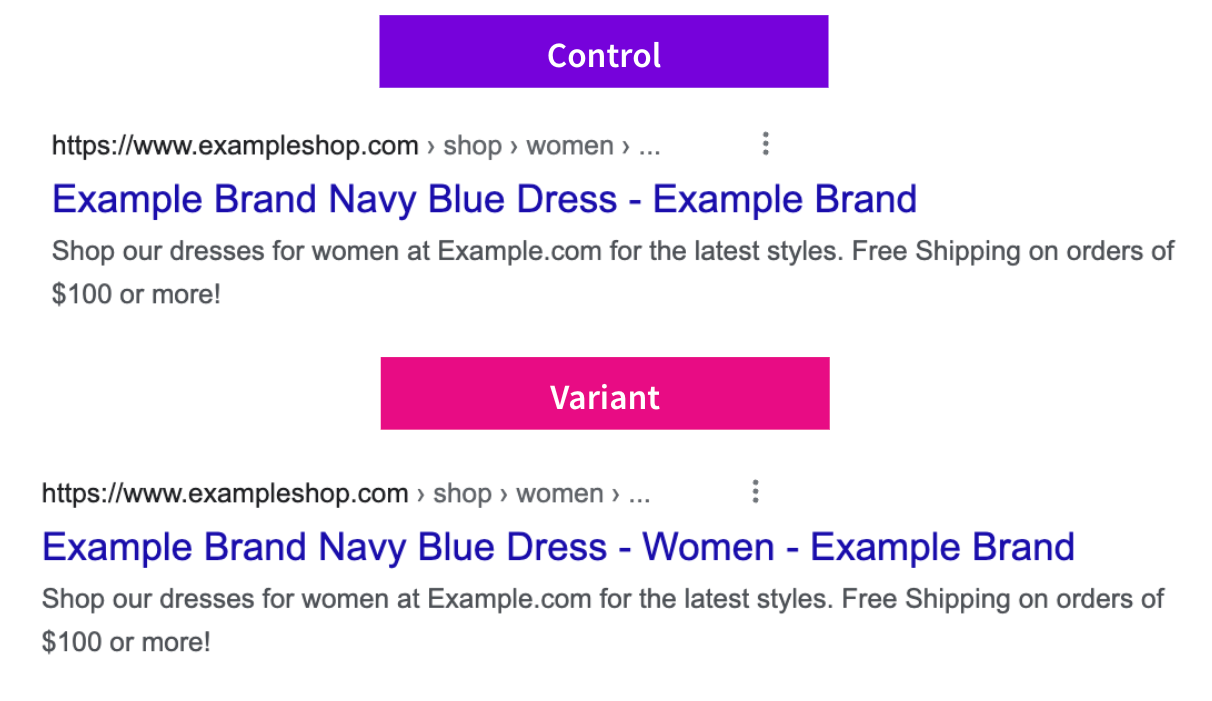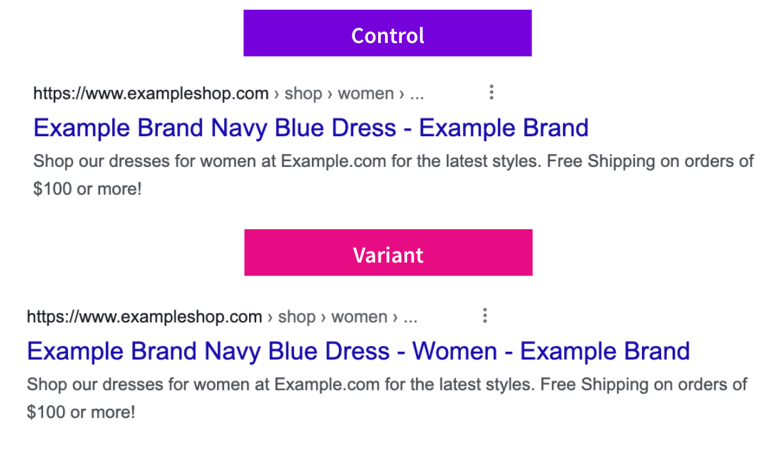Start here: how our SEO split tests work
If you aren't familiar with the fundamentals of how we run controlled SEO experiments that form the basis of all our case studies, then you might find it useful to start by reading the explanation at the end of this article before digesting the details of the case study below. If you'd like to get a new case study by email every two weeks, just enter your email address here.
This week’s #SPQuiz, we asked our Twitter followers what they thought the impact on organic traffic was when we added the category name to the title tags of product pages.
Here is what people thought:

In this case, the majority of respondents were wrong - only 15% of you guessed the correct answer. This change had a negative impact on organic traffic.
Read the full case study below to learn more!
The Case Study
Generally, ecommerce websites have two key SEO landing page types: category pages and product pages. Category pages list sets of products grouped by some attribute. Since those attributes often relate to desirable groups of products, category pages are essential landing pages for primary keywords. Product pages, on the other hand, usually focus on longer-tail keywords that are closer to the bottom of the funnel.
For both page types, the title tag is the primary signal for what kinds of products you’ll find on the page and, therefore, what keywords they rank for. An ecommerce customer wanted to test if adding the category name to the title tags of their product pages would improve organic traffic to these pages by targeting the primary keyword and helping users understand each specific product from the search results.
Below is the comparison between the control and the variant:

How did this experiment perform?
The chart below shows the impact of this test on organic sessions for product pages:

The test resulted in an estimated -12% loss in organic sessions, having a significantly negative effect. It isn’t too far off from results we’ve seen in the past when we inserted other additional keywords into title tags.
While Google respected the change in the search results, it could have led to more essential keywords or brand names being truncated from the title on the search results page. It’s possible the truncated elements were previously helping these product pages stand out from competitors. Another potential explanation for the negative result was that we accidentally harmed existing rankings for keywords related to the product by targeting the category name.
This is why it’s a good idea to always test changes before committing to them—30% of respondents to the Twitter poll expected this change to have a positive impact. However, with recent updates to Google’s algorithm, adding an extra keyword or two into titles can deliver unexpected outcomes. As every site is different, you might benefit from adding secondary keywords, or you may not. Your mileage may vary; the only way to know is by testing it.
To receive more insights from our testing, sign up for our case study mailing list, and please feel free to get in touch if you want to learn more about this test or our split-testing platform.
How our SEO split tests work
The most important thing to know is that our case studies are based on controlled experiments with control and variant pages:
- By detecting changes in performance of the variant pages compared to the control, we know that the measured effect was not caused by seasonality, sitewide changes, Google algorithm updates, competitor changes, or any other external impact.
- The statistical analysis compares the actual outcome to a forecast, and comes with a confidence interval so we know how certain we are the effect is real.
- We measure the impact on organic traffic in order to capture changes to rankings and/or changes to clickthrough rate (more here).
Read more about how SEO testing works or get a demo of the SearchPilot platform.



